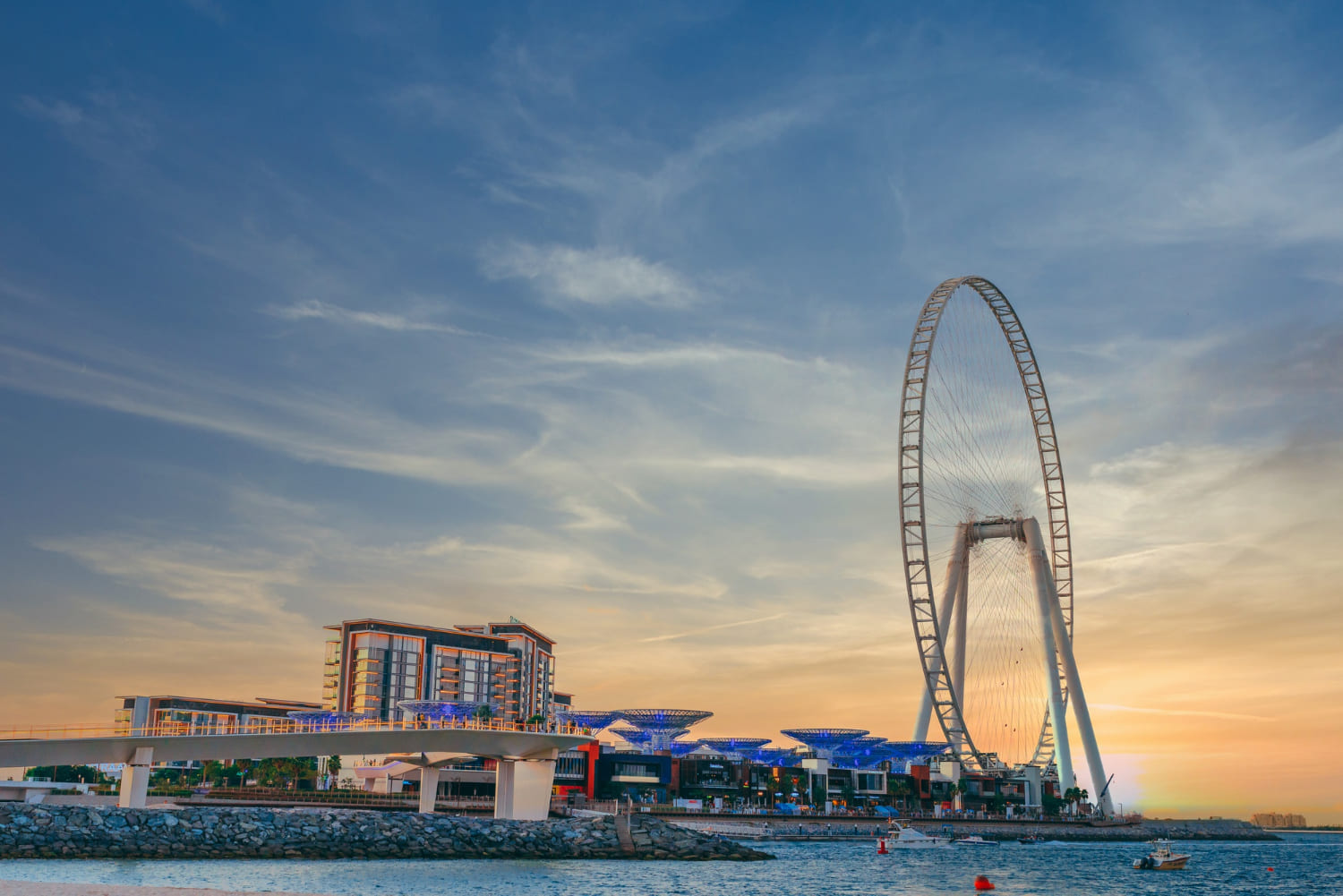The North Of Qatar Tour is a region steeped in history, culture, and natural beauty, offering a rich tapestry of experiences for visitors. While Qatar is often associated with its bustling capital, Doha, the northern part of the country presents an opportunity to explore a different side of this Arabian Peninsula nation. From ancient forts and traditional villages to modern marvels and serene beaches, the North of Qatar is a destination that promises an unforgettable journey through time and tradition. This article will guide you through the highlights of a North of Qatar tour, showcasing the must-visit sites, activities, and cultural experiences that await you.
Al Zubarah Fort: A UNESCO World Heritage Site
One of the most iconic landmarks in the North of Qatar is the Al Zubarah Fort, a UNESCO World Heritage Site that stands as a testament to the region’s rich history. Built in the late 1930s by Sheikh Abdullah bin Jassim Al Thani, the fort was originally intended as a military outpost but later served as a coast guard station. Today, it is a well-preserved example of Qatari military architecture, with its thick walls, corner towers, and central courtyard.
Al Zubarah Fort is not just a historical monument; it is also a gateway to the ancient city of Al Zubarah, one of the most important archaeological sites in Qatar. The city was once a thriving pearling and trading hub in the 18th and 19th centuries, and its ruins offer a fascinating glimpse into the past. Visitors can explore the remains of houses, mosques, and marketplaces, as well as the city walls that once protected this bustling settlement from invaders.
A visit to Al Zubarah is a journey back in time, where you can learn about the history of the region, the importance of the pearling industry, and the daily lives of the people who once called this place home.
Al Jumail Village: A Ghost Village Frozen in Time
A short drive from Al Zubarah Fort takes you to Al Jumail Village, a traditional Qatari fishing and pearling village that has been abandoned since the 1970s. Walking through the ruins of Al Jumail is like stepping into a time capsule, with the crumbling walls of homes, mosques, and other structures offering a poignant reminder of a bygone era.
The village’s location on the shores of the Arabian Gulf adds to its haunting beauty, with the sea breeze and the sound of waves creating a serene atmosphere. Al Jumail is an excellent spot for photography, especially during the golden hours of sunrise and sunset, when the light casts a magical glow on the ancient buildings.
Visiting Al Jumail Village provides a unique opportunity to reflect on the changes that have swept through Qatar over the past few decades, transforming it from a series of small, isolated communities into a modern, cosmopolitan nation.
Al Khor: A Blend of Tradition and Modernity
As you continue your journey through the North of Qatar, a visit to Al Khor is a must. This coastal town is one of the oldest settlements in the country and has a long history as a center for pearling and fishing. Today, Al Khor is a thriving community that blends its traditional roots with modern amenities, making it a popular destination for both locals and tourists.
One of the main attractions in Al Khor is the Al Khor Corniche, a picturesque waterfront promenade that offers stunning views of the Arabian Gulf. The Corniche is lined with palm trees, parks, and playgrounds, making it a great place for a leisurely stroll or a family picnic. In the evenings, the Corniche comes alive with locals enjoying the cool breeze and the vibrant atmosphere.
For those interested in the history and culture of the region, the Al Khor Museum is a must-visit. Housed in a traditional Qatari building, the museum features exhibits on the town’s pearling and fishing heritage, as well as artifacts from the nearby archaeological site of Al Khor Island, also known as Purple Island. The island is named after the purple dye that was produced there in ancient times from the murex sea snail, a valuable commodity in the ancient world.
Purple Island: A Natural Oasis
Purple Island, or Al Khor Island, is a hidden gem in the North of Qatar that offers a unique blend of natural beauty and historical significance. The island is connected to the mainland by a series of mangroves and mudflats, making it an ideal destination for nature lovers and birdwatchers. The mangroves are home to a variety of bird species, including flamingos, herons, and egrets, making Purple Island a popular spot for birdwatching.
In addition to its natural beauty, Purple Island has a rich history that dates back thousands of years. Archaeological excavations have uncovered evidence of human habitation on the island, including pottery shards, stone tools, and the remains of ancient structures. The island’s name comes from the production of purple dye, which was a highly prized commodity in the ancient world.
Visitors to Purple Island can explore the island’s trails, enjoy a picnic in the shade of the mangroves, or simply relax and take in the tranquil surroundings. The island is also a great place for kayaking, with the calm waters of the surrounding lagoons providing the perfect setting for a peaceful paddle.
Al Thakira Mangroves: A Kayaker’s Paradise
For those looking to immerse themselves in Qatar’s natural beauty, the Al Thakira Mangroves are a must-visit destination. Located just outside Al Khor, the mangroves are one of the largest and most diverse ecosystems in Qatar, providing a habitat for a wide range of wildlife, including birds, fish, and crustaceans.
One of the best ways to explore the Al Thakira Mangroves is by kayak, allowing you to navigate the narrow channels and get up close to the mangrove trees. Kayaking through the mangroves is a serene experience, with the only sounds being the gentle splash of your paddle and the calls of the birds overhead. It’s a great way to escape the hustle and bustle of modern life and reconnect with nature.
For those who prefer to stay on land, there are also walking trails that wind through the mangroves, offering the chance to explore this unique ecosystem at your own pace. Whether you’re kayaking or walking, the Al Thakira Mangroves are a peaceful oasis that offers a welcome respite from the desert landscape that dominates much of Qatar.
Al Ruwais: The Gateway to the North
As you venture further north, you’ll come to Al Ruwais, a town that serves as the gateway to the northernmost part of Qatar. Al Ruwais is a small but vibrant community that has retained much of its traditional charm, making it an excellent place to experience Qatari culture and hospitality.
One of the main attractions in Al Ruwais is the Al Ruwais Mosque, a beautifully restored mosque that dates back to the early 20th century. The mosque is an excellent example of traditional Qatari architecture, with its simple yet elegant design reflecting the spiritual and cultural values of the community.
Al Ruwais is also a great place to sample traditional Qatari cuisine, with several local restaurants offering dishes made from fresh seafood caught in the nearby waters. A visit to the local fish market is a must, where you can see the day’s catch being brought in by local fishermen and even purchase some fresh fish to take back with you.
Madinat Al Shamal: A Modern City with Ancient Roots
Madinat Al Shamal, or the City of the North, is the northernmost city in Qatar and a hub for the surrounding region. Despite its modern appearance, with wide streets and new buildings, Madinat Al Shamal has deep roots in the history and culture of the area.
The city is a great base for exploring the northern part of Qatar, with several nearby attractions including ancient ruins, beaches, and nature reserves. One of the highlights of a visit to Madinat Al Shamal is the Al Shamal Sports Club, which hosts a variety of sporting events and activities throughout the year, making it a great destination for sports enthusiasts.
For those interested in history, the nearby Umm Tais National Park is home to several archaeological sites, including the ruins of a pre-Islamic settlement that offers a fascinating glimpse into the early history of Qatar.
Conclusion
A tour of the North of Qatar is a journey through the heart of the country’s history, culture, and natural beauty. From ancient forts and traditional villages to modern towns and serene landscapes, the North of Qatar offers a diverse and enriching experience for all who visit. Whether you’re a history buff, a nature lover, or simply looking to explore a different side of Qatar, the North has something to offer everyone.
As you travel through this remarkable region, you’ll discover the stories and traditions that have shaped Qatar into the vibrant and dynamic nation it is today. So pack your bags, set your compass north, and get ready to embark on an unforgettable adventure in the North of Qatar.




